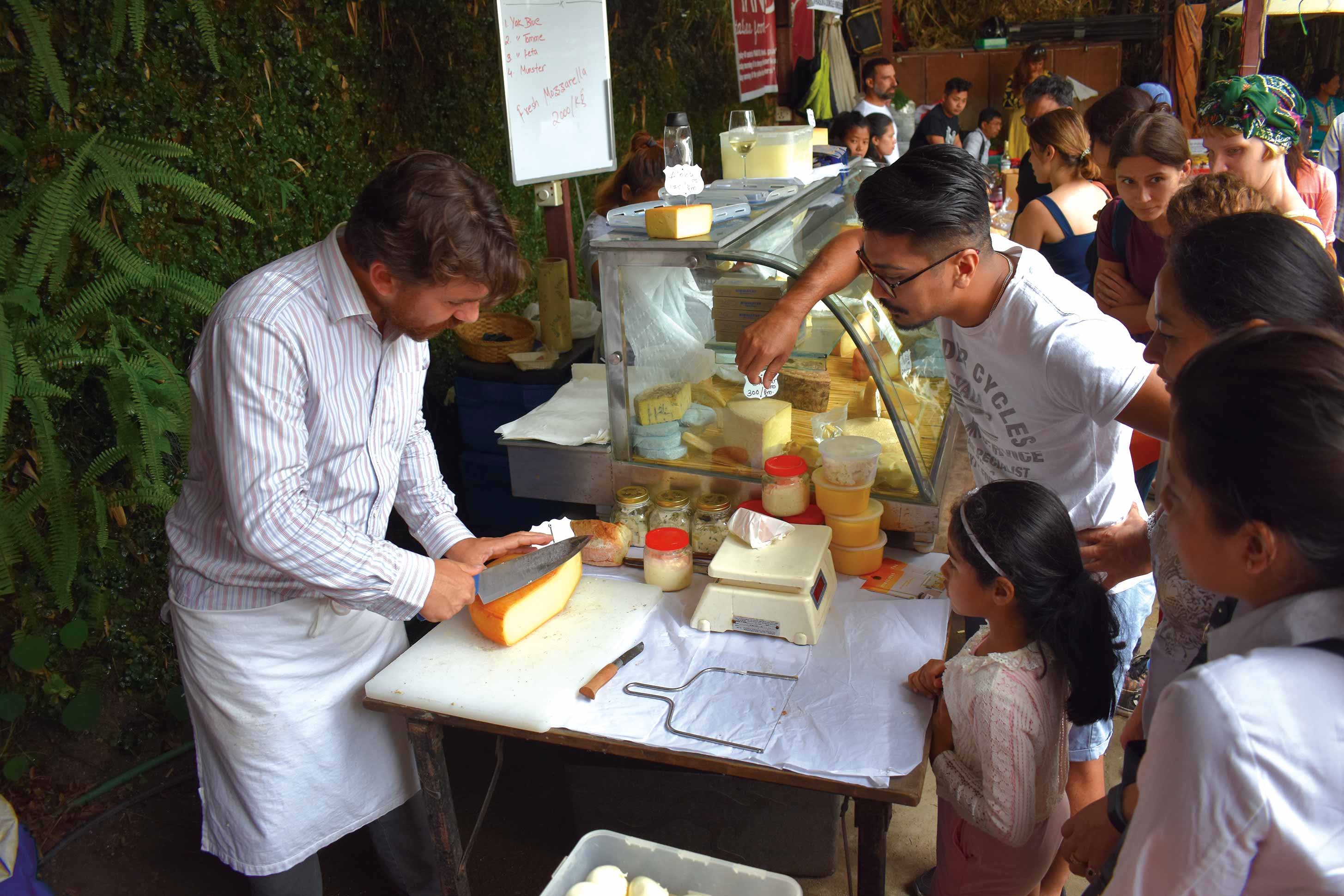The early November chill relaxed me as I set out on a journey to Sanga in the Kavre district. My destination, a factory belonging to a friend, which made pickles, jam and titaura out of Lapsi a fruit typical to Nepal. The scientific name to Lapsi is Choerospondias axillaries. It is greenish yellow when it’s ripe with a single seed and is sour to the tongue. It is perhaps the most famous ingredient for Nepali fruit pickles (achar). Besides dreaming of home made momos, non-resident Nepalis always yearn to have their relatives send Lapsi titauras and pickles to them. The main purpose of my visit to the factory was to stock up on the delicious treats to send to my aunt who is in the USA.
 My friend and I went over to their factory to observe the transformation of lapsi into titauras and pickles. The fruit is first collected in huge bowls to be boiled. After boiling, the seed is separated from the flesh. The flesh is blended and poured into huge wooden moulds and left in the sun to dry. This is for making dry titauras. A variant, the sweet and sour hot titauras is made when the flesh is made into sticky gravy and mixed with salt, sugar, chilies and other spices. Sweetened Lapsi can also be used as a delectable spread on bread. Lapsi candy is a perennial favourite with kids in Nepal and you can catch kids licking succulent lapsi candies during breaks at schools.
My friend and I went over to their factory to observe the transformation of lapsi into titauras and pickles. The fruit is first collected in huge bowls to be boiled. After boiling, the seed is separated from the flesh. The flesh is blended and poured into huge wooden moulds and left in the sun to dry. This is for making dry titauras. A variant, the sweet and sour hot titauras is made when the flesh is made into sticky gravy and mixed with salt, sugar, chilies and other spices. Sweetened Lapsi can also be used as a delectable spread on bread. Lapsi candy is a perennial favourite with kids in Nepal and you can catch kids licking succulent lapsi candies during breaks at schools.
To make pickles the fruit is boiled, peeled and mixed with various spices and stored it in jars. The jars are left in the sun and after a few days the pickles are ready for consumption. The pickle can also be mixed with variety of other ingredients. It could be a sweet pickle, a sour or hot one, or a mixed pickle. Mixed pickle is made by mixing the Lapsi with radish or green peas. This is the most common pickle that is eaten with the daily Nepali Lunch or dinner, with rice. Titauras is famous among all age groups and it sold in shops all over the valley. It also finds it’s way to markets in Darjeeling, Sikkim and other places in India.
Knowing about the process of transforming lapsi into achar or titaura was a very interesting one. I got myself many varieties of titauras and achar to be sent to my aunt, and to be had with friends and family. I would urge you to try out the delectable variations this fruit is made into, if you aren’t an avid lapsi fan already!










